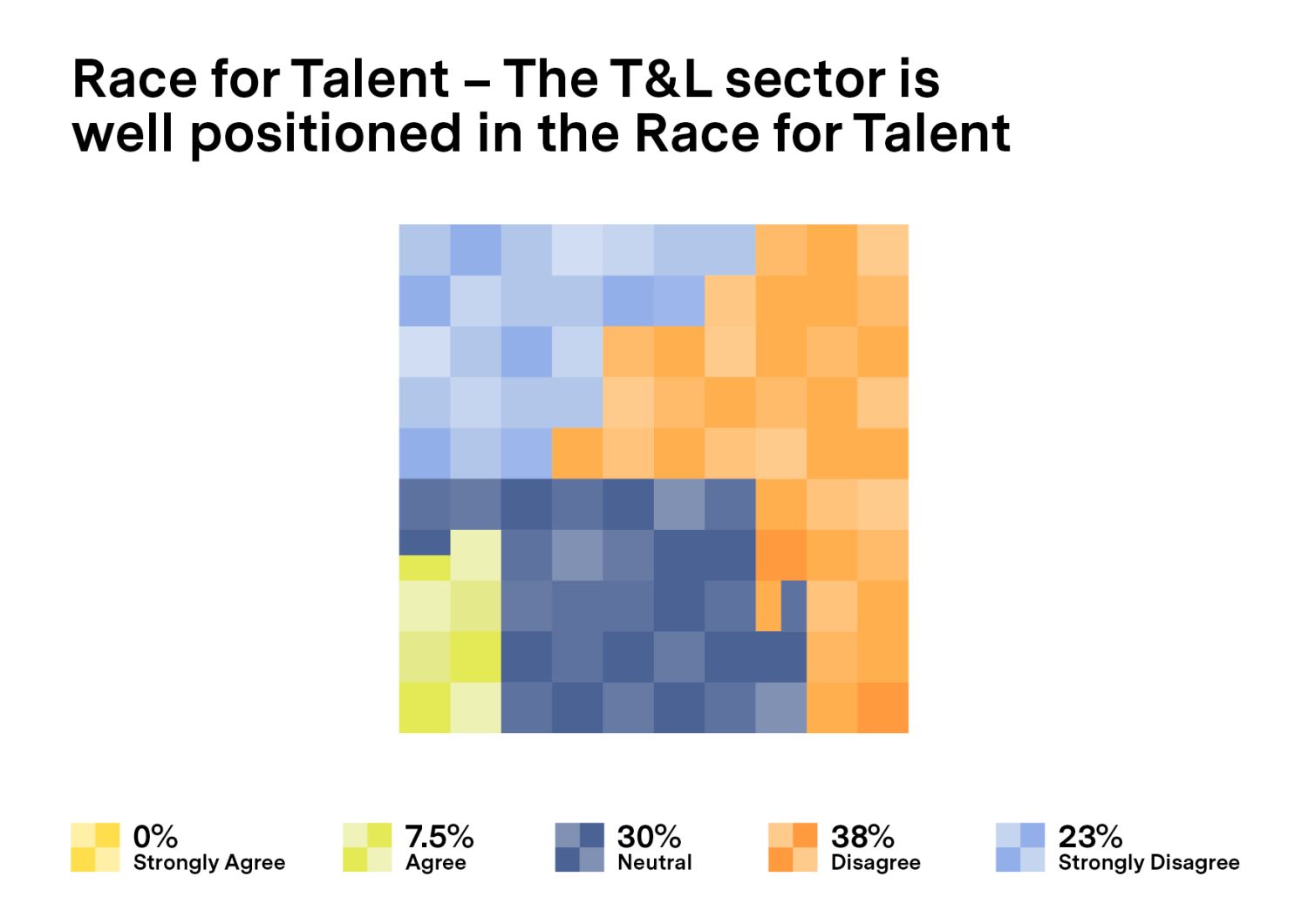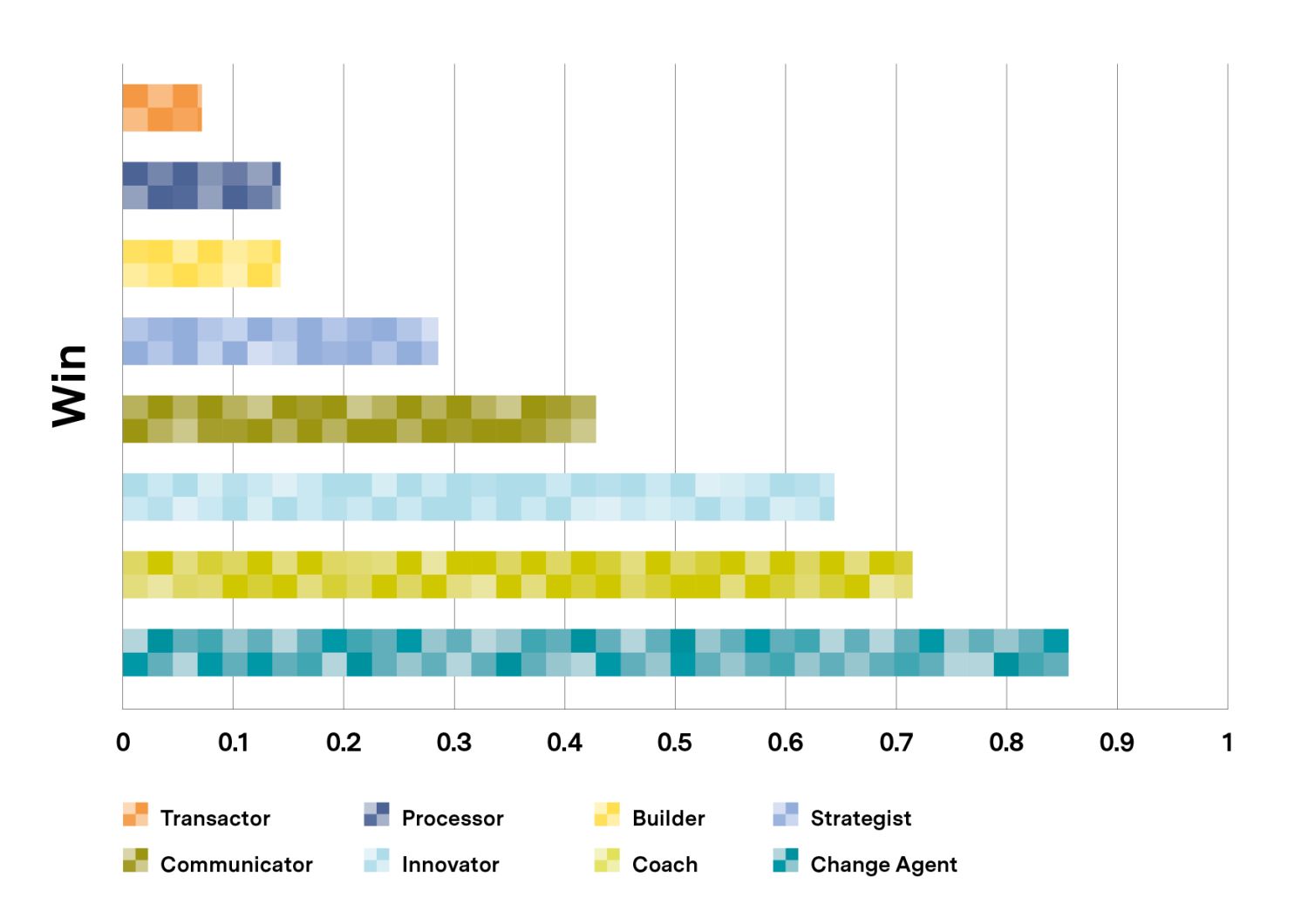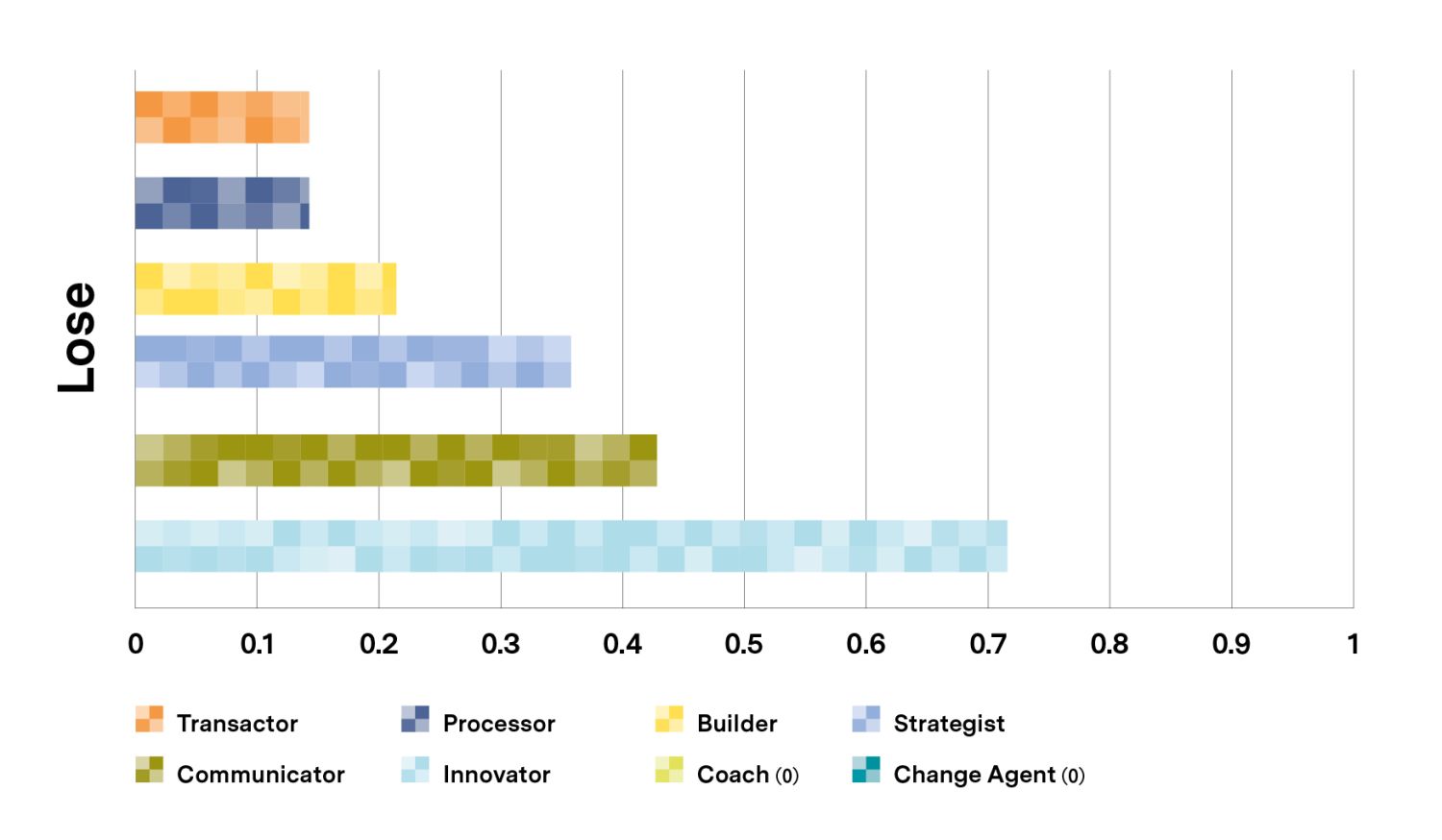Intro: Disrupt or Be Disrupted
We have weathered the pandemic, disrupted supply chains, and a heightened focus on sustainability. Now, CEOs from every industry anticipate even greater upheaval. To survive, leaders must adapt, reevaluating their leadership style and reshaping organizational culture for resilience. Longstanding leadership challenges are resurfacing, and it is clear: the road ahead will not be easy for today’s and tomorrow’s leaders. In other words, disrupt or be disrupted.
As such, the transport and logistics (T&L) industry stands at a decisive crossroads. Challenges are mounting, business models are under intense scrutiny, and a new generation of leaders must drive the transformations needed to secure a future in an unpredictable world. Especially in such a labor- and personnel-intensive sector as the T&L industry, people are at the heart of a company’s success—which is why leadership can make the difference.
But how can we equip T&L leaders for success in these demanding times? What kind of talent and skills are needed to navigate through current and upcoming challenges? How can these leaders build a winning culture within their firms? To investigate these questions, we conducted interviews with 31 top regional and group CEOs of T&L companies across the globe.
In the following article, we have distilled the key insights from our interviews, starting with the most frequently cited challenges in the T&L sector. We have outlined what leadership skills are most likely needed for navigating these challenges successfully and present strategies to help companies identify and develop leaders who can be successful in transforming the sector. It is time to rethink leadership and seize the opportunities that lie ahead.
From Global Polycrisis to Bad Reputation and Sustainability Efforts: T&L CEOs Reflect on Industry Challenges
Our conversations with CEOs reveal: the sector is heading to a storm of challenges, some of which are unique to this market. While many of these hurdles are not new, the consensus among leaders is clear—they are about to leave an even deeper mark on the industry.
Global Polycrisis
At the forefront of concerns is what CEOs describe as a “global polycrisis”. This term refers to multiple, overlapping crises happening simultaneously, such as climate change, economic instability, and geopolitical tensions. These interconnected issues collectively increase global vulnerabilities and challenges. Based on our interviews, the most impactful crises identified by CEOs are as follows:
- Geopolitical tensions: Moving goods across continents means navigating borders and cultures and an array of geopolitical challenges: from wars to political conflicts to trade disputes and sanctions. These factors profoundly undermine the resilience and stability of the supply chain—leaving T&L companies struggling to keep up with the impact on their operations and bottom lines.
- Political landscape: Moreover, the political landscape adds its own set of challenges into the mix: high bureaucratic hurdles, employee strikes, excessive regulations, and inadequate infrastructure. T&L companies need to jump through many hoops before being able to deliver their goods—and promises.
- Economic situation and market volatility: Energy prices are soaring, inflation is unrelenting, and these pressures contribute to a high level of market volatility. The economic downturn affects the T&L industry in various ways, including the emergence of consolidation trends among clients. This trend further intensifies the already competitive nature of the industry, which operates on narrow profit margins.
- Labor shortage: To add to all of this, the CEOs highlighted that the sector is grappling with a significant labor shortage across key markets—a challenge not unique to this industry but one that poses particular difficulties for this personnel-intensive sector.
Unfavorable Reputation of the Sector as an Employer
In terms of talent acquisition, the CEOs emphasized the importance of reshaping the sector’s image to attract skilled workers, particularly those from outside the industry. The sector's reputation as a potential employer leaves much to be desired, resulting in HR and leadership challenges. Only few of the CEOs interviewed believe the industry to be well positioned in the global race for talent, while over 60% said significant improvements are needed (see figure below). As such, the CEOs recognize that overcoming this unfavorable perception of the T&L sector is crucial for staying viable as economic pressures mount.

Drawing on our interviews, this seems to be mainly due to two factors:
1. Logistics as commodity. Despite the T&L sector’s vital role as backbone of the economy, the newfound appreciation of the industry during the pandemic seems to have plummeted again to pre-COVID levels. As a volume-driven, competitive, low-margin business that benefitted from globalization, the T&L sector is now facing severe headwinds according to our interview partners. T&L companies find themselves in a difficult position within the services industry. To their customers, it is important that the goods are transported fast and reliably—and, almost most importantly, cheaply. This view of logistics as a commodity cannot only be found on the customer side but seems deeply ingrained in the self-image of T&L players. As James Wroath, CEO Wincanton, put it, “[the logistics industry] is a commodity because we are ALLOWING it to be a commodity. […]” To add to this, several CEOs agreed that the T&L sector is not good at self-promoting or branding.
2. Unfavorable market perception: Branding challenges. Simply put, logistics appears widely unappealing for outsiders: it is not a sector associated with shiny new technology nor high salaries. Instead, it is often seen as a “dirty” industry—polluting ships, trucks that cause congested highways, and delivery vans blocking city streets. Lower-level jobs are perceived as exhausting and difficult, requiring hard physical labor in noisy environments and exposure to extreme weather. The expectation for employees to consider international positions, once a selling point, now seems to deter young talent. Moreover, events like the Suez-Canal incident, poor working conditions, or delivery delays are widely spread by media outlets and contribute to the questionable image of the sector. And far too easily perception becomes reality. Hence, it is time for T&L leaders to reclaim their own narrative and proactively reshape the perception of their industry.
Our discussions with the CEOs underscored that T&L can, and should, boost its public image as an industry. All of our interview partners share a deep passion for the sector, and based on our interviews we identified three key themes that showcases why T&L is better than its reputation:
- First, Logistics plays a crucial role in the functioning of the economy and society, making it a strategic and future-proof industry. As Hakan Bicil, CEO Duvenbeck, stated: “As long as we live on this planet, we will transport goods from A to B.”
- Second, a career in T&L offers engaging work in a fast-paced, dynamic environment. Leaders in this sector have the freedom to innovate and take action, presenting intriguing career paths and leadership challenges. Managing a large number of employees while balancing customer contact, process optimization, and diverse tasks are key aspects of leadership in T&L. Additionally, this is a truly international and multicultural sector, where leaders engage in global work with significant impact.
- Lastly, no matter the background, profile, or passions, T&L has a place for everyone to fulfil their potential and find their place. Its multifaceted nature makes it a sector with opportunities for all.
Embracing Diversity as Opportunity
Despite its potential to offer everyone a home, some CEOs have described the current T&L sector as an ‘old men’s club’—pointing to important areas where the industry can grow and improve. While business dealings have evolved, the industry has a long way to go in embracing diversity and fostering fresh perspectives. As such, there is a unique opportunity to stand out within this sector by making meaningful investments in diversity efforts.
Digital Transformation as Inevitability
The majority of the CEOs agrees that digitalization is a significant challenge the industry is currently facing. Despite progress in this area over the past decade, much of it has been driven by external pressure from new entrants like Amazon and Flexport, rather than internal innovation. Several CEOs shared that many legacy players are not investing enough in new digital solutions and that the need to use clients' software further stifles their motivation to innovate.
Differing Views on ESG/Sustainability within the Sector
Surprisingly, while ESG and sustainability are hot topics for the business world, only a handful of CEOs mentioned them as crucial topic for T&L. Some see ESG and sustainable logistics as the way forward. However, these topics have long been ignored, and most CEOs admit that the industry is ill-equipped to tackle sustainability. This creates a consequential challenge: companies are squeezed between customers who see logistics as a commodity and are unwilling to pay a sustainability premium while governments impose stricter ESG and sustainability regulations. (Delve deeper: How leaders can build the green road ahead for transport and logistics - Egon Zehnder)
***
Our Take: It will take visionary Leadership to defy the Status Quo
As the complexity of challenges continues to grow, tackling these critical issues requires innovative strategies and strong leadership to challenge the status quo. The industry’s challenges will not disappear overnight; a collective effort across all levels of the T&L sector, guided by bold leadership, is essential. Both the leaders we interviewed and we at Egon Zehnder agree: having the right leaders in key positions, as we discuss in the next section, can pave the way for a more prosperous and resilient industry.
Steering the Ship through Leadership Challenges
New Voices are Shaking Up Organizational Culture
Several CEOs highlighted that the new generation of employees is shaking up the T&L sector, impacting culture, values, and leadership. Employees today expect more than a paycheck; they put a high value on factors such as work-life balance, flexibility and innovative work models. And while money is still a relevant incentive, it does not hold the same value as in prior decades. This sentiment was also echoed in a recent Egon Zehnder global study analyzing workers’ expectations on the workplace. For example, instead of an expensive, high-prestige company car, they prefer the flexibility that enables them to take their kids to school in the morning. Here, leaders have an opportunity to develop a more human-centric talent strategy and build a culture that uplifts these values and unlock people’s potential.
Unsurprisingly, most leaders interviewed agree on the need to develop new leadership skills to succeed in today’s reality (see figure).

Cultivating Emotional Intelligence, Development, and Psychological Safety
To bring the industry forward, the T&L sector needs “more leaders instead of managers”, as Björn Schniederkötter, CEO Hoyer Group, concluded. It is essential for these individuals to lead and inspire, rather than just oversee and manage. This is illustrated well by the responses from the CEOs to our questions on which leadership archetypes will most likely gain or lose importance in the sector going forward (see figures below). The archetypes of change agent, coach and innovator are the ones that were assumed to be most likely to gain in importance by our interview partners. These three archetypes highlight the growing necessity for leaders to be able to deal with change—whether it be initiating it (innovator), driving it (change agent) or enabling it in their team (coach). In contrast, the top three archetypes likely to lose importance in the T&L sector are the transactor, builder and processor—all archetypes that put the operational performance and growth of the company in focus rather than the employees.


Based on our interviews, we identified the following key areas which T&L leaders should prioritize to navigate the above-described challenges long-term: emotional intelligence, people development, and a supportive, transparent culture.
Emotional intelligence and empathy stand out as essential qualities. Leaders with high emotional intelligence can build strong, cohesive teams, fostering a culture of collaboration and mutual respect that enhances organizational health.
Furthermore, people development emerged as a critical theme. Effective leaders foster growth and coach their teams, empowering employees to take ownership of their work. This involves balancing empowerment with guidance, focusing on giving people responsibility early in their careers while providing clear goals and feedback. By enabling self-actualization and offering direct, constructive feedback, leaders can cultivate a culture of lifelong learning and development. A safe environment where errors are allowed builds the foundation of such a culture.
A supportive, transparent culture is vital for organizational success. Leaders’ involvement, approachability, and supportiveness build trust and team spirit, creating a sense of unity and shared purpose. Transparency and open communication are key components in this process, ensuring that everyone is aligned and working towards common objectives.
Key Traits of the T&L Leader of Today and Tomorrow
To navigating today’s complexities, efficiency and operational excellence are not just desirable. They are the “bread and butter” of any successful T&L company, as one leader put it. Customers demand reliable, timely delivery. Current and incoming leaders need to grasp that execution is the lifeblood of the business. CEOs must take ownership, be decisive, drive for results, and—very importantly—be able to manage and lead a vast amount of people in this personnel-intensive industry. However, these skills alone do not suffice anymore.
One important quality of a successful CEO based on our interviews is the ability to balance vision and execution. This dual focus can notably enhance their effectiveness: being forward-thinking visionaries who inspire and align their teams around a long-term strategic direction, while also being grounded operators who prioritize operational excellence. Ensuring that day-to-day activities are efficient, effective, and aligned with broader goals is essential. A visionary without operational prowess may risk lofty ideas without substance, and a focus solely on operations can lead to stagnation and missed opportunities for innovation. CEOs who can harmonize these aspects create a dynamic environment where strategic foresight and operational rigor coexist, driving sustainable growth and competitive advantage.
Flexibility and adaptability are the hallmarks of current and future T&L leaders. Leaders must think strategically, anticipate industry shifts, and proactively shape the future amid uncertainty. Achieving this requires a bird’s-eye view of the organization and the ability to establish structures and processes that future-proof their companies. It is not about managing opposites; it is about embracing both.
In this uncertain environment, employees need a leader who provides stability through authenticity, reliability, and honesty. Leading with integrity and openness can help to create a sense of safety, even when difficult decisions are necessary. Effective communication is key—not just in conveying goals and strategies, but also in inspiring the team and guiding them through transformation. Effective leaders should be good storytellers, making their messages resonate throughout the organization.
***
Cut Through the Noise and Lead with Purpose
A successful leader in T&L is not just flexible; they can thrive on ambiguity and complexity. They lead authentically and combine the efficiency and operational excellence with a vision of the future. Forget about radical upheaval—these leaders are in it for the long haul, championing sustainable change. They effectively communicate the vision and purpose of the work to their employees. As Kawal Preet, President Asia Pacific FedEx, powerfully stated, “as complexity continues to grow, one needs to learn to simplify to solve”. It is time for T&L leaders to cut through the noise and lead with clarity, ensuring that every team member is not just along for the ride, but actively driving the journey forward.
Championing Change: The Only Way Is Forward
To move the sector forward, leaders must champion a new approach to leadership. T&L companies can utilize the following strategies to cultivate a new generation of leaders who are well-equipped to lead their organizations towards a more successful and sustainable future.
- One crucial strategy is attitude hiring, where candidates are selected based on their alignment with the company's values and their potential for leadership, rather than solely on technical skills. This approach ensures that new hires are not only capable but also culturally fit to drive the organization forward.
- Comprehensive management programs are equally essential. These programs are designed to develop leadership competencies, providing current and future leaders with the tools and knowledge they need to navigate the complexities of the T&L sector.
- Additionally, instead of focusing solely on traditional Key Performance Indicators, companies should reward behaviors and skills that exemplify strong leadership, such as emotional intelligence, effective communication, and team-building capabilities. When companies incentivize such leadership development and culture building, they become better positioned not only to meet their immediate financial goals. They rise above with resilient, capable leaders.
Partnering with a trusted advisor can make all the difference in this transformation. As a leading executive search and leadership advisory firm, Egon Zehnder can partner with companies on this journey. We support companies not only with identifying and hiring leaders who have the right skills, potential, and alignment to a company’s values and culture. Moreover, we are committed to unlock the potential of existing leaders within the organization through tailored leadership development programs, including direct feedback, coaching, and fostering an environment of continuous learning that enable them to achieve real impact. By working closely with our clients, we help build a culture that is resilient, adaptive, and capable of navigating the complexities of the T&L sector.
The message is clear: evolve or risk being left behind. The only way forward is to champion progress, innovate relentlessly, and build the leadership needed to thrive in tomorrow’s T&L landscape.





